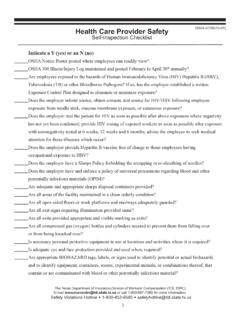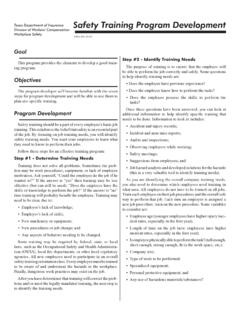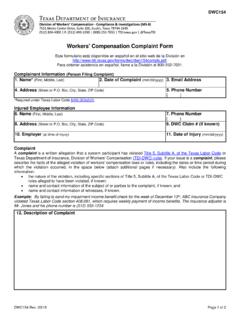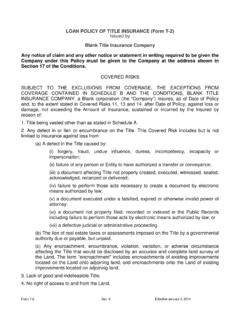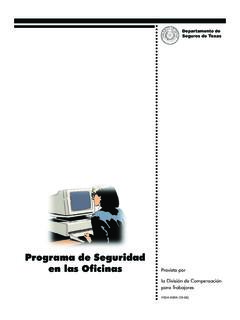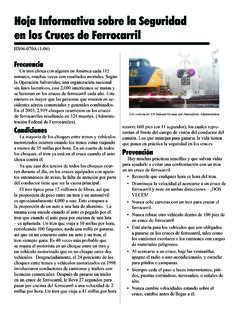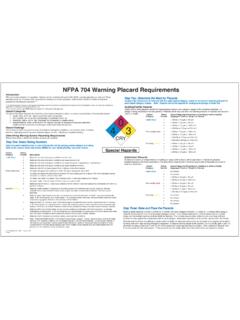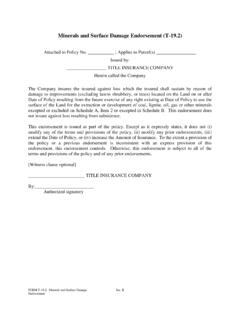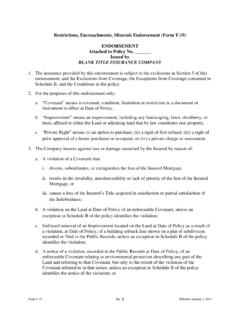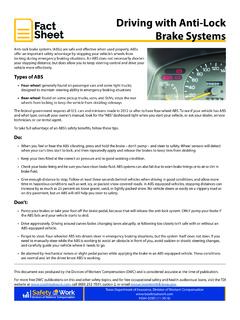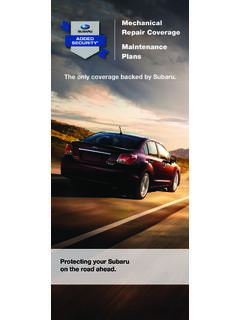Transcription of Vehicle Backing Safety Fact Sheet - Texas Department of ...
1 Vehicle Backing Safety Fact Sheet Hs04-018C (11-20) Most drivers spend less than 1% of their driving time in reverse, yet national statistics indicate that about one-quarter of all collisions occur while Backing incident rates are even higher among fleet drivers, accounting for up to half of all on-the-job Vehicle Though Backing incidents often occur at low speeds, collisions while driving in reverse can result in severe and fatal injuries. In 2019, 10,335 drivers in Texas cited Backing as a factor in a Vehicle crash. Of those, thirty-six individuals received serious injuries, and eight individuals Nationally, backover incidents kill an estimated 200 people annually and injure more than 12, Backing carries its own set of driving risks.
2 However, Backing incident rates and related injuries are expected to decrease as a growing number of vehicles with rear-vision camera systems and other Safety technology features hit the road. The Case for Integrating Safety Technology into Company Vehicles In May 2018, a federal regulation took effect requiring all new cars sold in the to have rear-vision cameras and video displays to help drivers avoid accidents while Backing . Some automakers are going further by adding backup warning sensors and reverse automatic braking. Rear automatic braking, an option in only 5% of vehicles before 2018, resulted in a 62% drop in reported backup accidents in cars with that equipment. Combining automatic braking with rear-vision cameras and sensors cut reverse crashes by 78%.
3 5 While this technology still has room for improvement, reverse braking systems currently focused on preventing collisions with obstacles will soon protect against pedestrian crashes. Front automatic braking will become standard in most cars in 2022, but there is currently no plan to make it standard for Until this technology becomes standard on all vehicles, one of the best ways for employers to prevent Backing collisions is to create a company-wide Vehicle training program that includes the following safe Backing practices. General Vehicle Backing Safety Practices Drivers' poor techniques cause most Backing accidents. Limited vision out of back windows or around long truck beds and equipment bodies can result in drivers not seeing other vehicles, obstacles, coworkers, or pedestrians.
4 Whether in a parking lot, on the road, at a construction site, or in an agricultural field, workers who learn the proper steps to driving in reverse can help prevent Backing accidents. Safe Parking Tips Encourage drivers to avoid Backing a Vehicle unless necessary. Use these added Safety tips when parking. Choose pull-through parking spaces when available. Driving forward into a pull-through stall can keep motorists from having to back out of a parking space. If a pull-through parking space is not available, back into the stall when arriving, rather than Backing out of it when leaving. Basic Vehicle Backing Steps Adjust mirrors . Check the rearview and side mirrors on the Vehicle , and adjust them to make blind spots as small as possible.
5 While mirrors and rear-vision cameras provide added visibility, drivers should not depend solely on this technology. These devices can cause drivers to lose depth perception when Backing . Look out the back window. Backing up requires drivers to turn their heads and bodies to the right to see beyond the headrest and through the back window. To improve balance, drivers should drape their right arm over the seat's back while their left hand grips the steering wheel. Reverse slowly. Reverse is a more powerful gear than drive, so carefully and slowly accelerate when Backing . It is more difficult to maintain steering control when the Vehicle is in reverse. Know the direction to turn the wheel. The direction to steer a Vehicle when Backing depends on whether a trailer is attached.
6 When Backing a Vehicle without a trailer, the driver should turn the steering wheel in the direction they want the rear of the Vehicle to go. If Backing a Vehicle with a trailer, drivers should steer in the opposite direction they want the trailer to go. Practice is the best instruction. Park defensively. Choose an easy-exit parking space that does not crowd nearby vehicles and is away from other obstacles. Park in the center of the parking space. Think ahead when parking in alleys. If an alley does not permit vehicles to drive all the way through or does not provide room to turn around, back into the alley (if local ordinances allow). Backing into the alley enables motorists to drive forward into the street when leaving. Texas Department of Insurance, Division of Workers Compensation HS04-018C (11-20)2 Look at the surroundings.
7 Scan the area and look for hazards, such as poles, trees, buildings, or people. Avoid parking near traffic lanes or pedestrian areas. Continually check all mirrors while Backing . Perform a walk-around. Walk around the Vehicle before Backing it and after it has been parked for a while. Look for children, animals, soft or muddy areas, potholes, tire hazards, or other possible dangers. every Backing situation is different. Drivers may back out of the same spot day after day, but new hazards can arise. Do not delay after the walk-around. Return to the Vehicle and start Backing within a few seconds after finishing the walk-around. Do not give people or obstacles time to change behind the Vehicle before Backing . Other Backing Safety Guidelines Most drivers back infrequently and, therefore, lack a high level of confidence in doing it.
8 For drivers who are unsure of their Backing ability, take the time to practice. Set up some cones to back around or find an empty parking lot to learn how to back into stalls. Get to know the Vehicle and its blind spots. Use the following Backing tips to reduce and prevent crashes: Never Assume. Never assume people will stop or not walk behind a Backing Vehicle . If a driver sees someone in the mirror, stop until the individual is clear and in a safe position. Know the clearances. When preparing to back, always look for low-hanging trees, electrical wires, or any other potential clearance-related problem. Use a spotter, if available. If a reliable person is available to guide the driver back, use them. Roll the window down to hear any verbal instructions or warnings.
9 Agree on hand signals before starting. Keep the spotter in sight, preferably in the driver's side mirror. Encourage the spotter not to walk backward while giving instructions. Stop Backing if the spotter is not in the driver's sight. Avoid distractions. Turn off the sound system when preparing to drive in reverse. Silence the phone and remove all other distractions that can draw attention away from safely Backing . Back slowly. Creep or use an idle speed when Backing . Drivers should cover the brake with their foot and keep the Backing distance to a minimum. Texas Department of Insurance, Division of Workers Compensation HS04-018C (11-20) 3 Safe Backing Practices for Large Vehicles or Vehicles with Trailers Backing Large Vehicles or Vehicles with Trailers Vehicle Backing is particularly dangerous in workplace settings.
10 Large vehicles, such as semi-trucks, construction vehicles, and vehicles equipped with trailers, present more severe Backing hazards. These vehicles have significantly larger blind spots than standard vehicles and, if hauling a trailer, pivot in the opposite direction when Backing . Practice and proper Backing Safety training can reduce the chances of collisions and save companies millions of dollars in damages, lawsuits, and insurance costs. In addition to the steps mentioned above, the following tips can provide extra Safety when Backing large vehicles and vehicles with trailers. Use the steering wheel as a visual reminder. Backing up a trailer can be counter-intuitive because the trailer moves in the opposite direction of the Vehicle .
